- Home
- Henry James
The Princess Casamassima Page 2
The Princess Casamassima Read online
Page 2
The novel takes on the solidity, and the uncertainty, of a ‘history’ because of the novelist’s own genuine sense of the reality of character and event, and consequently of his own inevitably partial knowledge. But James characteristically revels in what to him is mysterious, rather more than what to him is clear. Mystery and uncertainty are of the essence of both character and plot. James enhances this effect because so much of the plot is concerned with a political conspiracy which of its nature tries to avoid discovery.
James also chooses an indirect form of narrative to deepen our sense of mystery and uncertainty. Thus neither of the great climaxes of Hyacinth’s adult life is directly described. The first is the meeting with the international conspirator and organizer of terrorism, Diedrich Hoffendahl. Feeling in Hyacinth, and in the reader, is powerfully built up in the description of the preliminary evening meeting at the ‘Sun and Moon’ and in the long ride in the cab late at night through unknown streets with Muniment, Poupin and the third serious conspirator, the German Schinkel. But the only description of the actual meeting with Hoffendahl and Hyacinth’s giving his ‘sacred vow’ is the rather general account which Hyacinth gives to the Princess at Medley. Thus the viewpoint of Hyacinth is stressed, with its limitations of knowledge and mixture of feelings, to strong artistic effect.
The second climax is Hyacinth’s suicide. This is built up to in the descriptions of a moving sequence of visits and discussions, with Mr Vetch, Millicent Henning, the Princess. We read with the anxious attention of dread and sympathy and expectation. The event itself is only realized in its subsequent discovery by the Princess and Schinkel. The complexity of motivation, Hyacinth’s deep torment, his final decisiveness against himself, are all left the more effectively for us to deduce for ourselves, following and sharing the ignorance, anxiety and grief of the Princess as she seeks to find Hyacinth before he does the dreadful deed, whose simplicity cuts through the complexity of feeling and motive.
IV
The sense of mystery, of objects only partially perceived but sensitively responded to, is partly created by the subtlety and the qualifications of James’s characteristic style, which may puzzle a reader coming fresh to it. It is not calculated for rapid narration of easily observable events, but for evoking delicate nuances, registering uncertainties and possibilities. James’s style in The Princess Casamassima has not reached the extreme tortuosity of the later novels. It still reflects enough of the directly experienced material world to give us solid handholds and even clear signposts. Like Whistler’s famous contemporary picture of Battersea Bridge, although mists surround, and luminosity is as puzzling as it is enlightening, we can still see the solid object of contemplation, still follow a clear narrative. The text of the 1886 edition, here reprinted for the first time, is somewhat simpler, if perhaps a little stiffer, than the text of the New York Edition of 1909, which James polished, though he did not fundamentally change it.
James’s style is well suited to a story whose very essence is concerned with speculation about a secret conspiracy, uncertain and threatening. Such a sense, such speculation, is intrinsic to all James’s greater work, whether long or short. It is at the heart of The Turn of the Screw, to give an obvious example.
The focus is on the inner life, and James makes little attempt to mimic the style of actual speech. Consider, for example, the paragraph describing part of Hyacinth’s conversation with the Princess at Medley Park in Chapter 24:
It was impossible that our young man should not feel, at the end of ten minutes, that he had charmed the Princess into the deepest, most genuine attention… The reader may judge whether he had passed through a phase of excitement… but that had finally spent itself, through a hundred forms of restlessness, of vain conjecture… He would have detested the idea… and though it could not fail to be agreeable to him to perceive that… he could still not guess how very remarkable, in such a connection, the Princess thought his composure… She had the air – or she endeavoured to have it…; nevertheless… (pp. 334–5)
The passage begins with a double negative which denies any chance that Hyacinth may be conceited, yet allows his enjoyment of Christina’s attention in the next sentence. The double negative mutes the effect without denying it. It is a characteristic of James’s style, avoiding commitment, asserting by paradox. Hyacinth’s emotion is then allowed to escape in generalizations. The conditional ‘would have detested’ opens a possibility to the reader in order to close it, and more negatives precede the Princess’s positive response. Even there James goes on to modify the clear impression of the ‘air’ she had – or appeared to have. The reader’s understanding advances slowly, as along a road where there are many possible alternatives presented, testing the winding way, not always quite certain where he has arrived, until he casts a glance back to see that tentativeness of advance has always been impelled by firmness of purpose. James modified the passage slightly in the New York Edition, but its essence is unchanged.
V
The central interest of the story is psychological and moral-aesthetic (not moralizing in any obvious, didactic sense). States of feeling are obscure, fluid, in contrast to physical circumstance. James sets the realistic physical circumstances plainly enough for his purpose, and there are beautiful descriptions not only of beautiful things, but also of things ugly and oppressive in themselves. The setting of the novel is of the greatest importance because the misery and squalor of the multitude, which are contrasted with the beauty and comfort of the few, are the source of the central dilemma. But the novel is about human responses, not physical actuality for its own sake.
The interest in character is more deeply personal than even James himself probably realized. There is no reason to doubt the account in his Preface that the idea for The Princess Casamassima grew from his walking the streets of London, and his consciousness both of London’s wealth and of the misery of the millions who lived amongst it and were excluded from it. ‘What would I do in such circumstances?’ was a natural question for one so sympathetic, sensitive, imaginative, intelligent, as Henry James. James shows himself asking precisely this question in his comment on The Portrait of a Lady. He remarks how the characters floated into his mind ‘all in response to my primary question, “Well, what will she do?” ’ * It is pre-eminently the question a novelist asks himself, as opposed to the storyteller of a traditional tale, whose whole outline is already fully known to him and to his audience or reader. The novelist has to think of a character, imagine his or her feelings, establish motives, which give rise to actions, which concern other people, who react to the principal character’s ideas, feelings, and so forth, in a sequence. The novel achieves its sense of being a ‘history’ by being, as it were, a ‘displaced autobiography’, or an autobiographical fantasy, which needs knowledge for the description of attendant circumstances, but which depends on imagined personal response to those circumstances.
Thus it is that James the novelist projects himself, sympathetic, sensitive, imaginative and intelligent, into the situation of one deprived of social advantage, doomed for ever to miss appreciation of, or as in the novel he terms it even more significantly, being ‘initiated’ (p. 164), into the beautiful things of the world. In this novel, James’s hero, his ‘little presumptuous adventurer, with his combination of intrinsic fineness and fortuitous adversity’ (Preface, p. 43) is clearly an imaginative surrogate for the author. In this respect The Princess Casamassima is one of James’s most personal novels, even if it is a cliché of criticism that the novel is also one of James’s socially most engaged writings.
Though James’s sympathetic detachment allows him to pursue his thoughtful analytical exploration without that kind of personal projection which distorts a work of art, he is nevertheless more deeply engaged here (as in all his greater novels) than the emphasis on comment and analysis, if left unqualified, may suggest. He is not a bland explorer of other people’s misery by the device of a superficial personal transposition. His identification wi
th his hero is profound. Though James’s own life was not a tragedy, Hyacinth’s deeply wounded sensibility is James’s, his joys are those of James, his ambiguity towards his project is the ambiguity of James himself towards life, and the frustration of Hyacinth is the expression of a deep sense of exclusion from life in James himself. Hyacinth could only resolve his terrible dilemma by suicide, presenting us with a spectacle of tragic frustration which James himself only escaped by the practice of that art which was, in one sense, itself a retreat from the life of action.
James recognized this recessive aspect of himself in other places, notably in the curious late story ‘The Jolly Corner’, published in 1908. In this story the hero, Spencer Bryden, returns, as did James himself in 1904, to the United States after a long absence in Europe. In his childhood home he meets the ghost of his other potential self, that self which remained at home. This other self, if realized, would have made money and tasted power; in other words, would have lived rather than written about life. The duality of character is deep in James. It is the source of much of his ambiguity, his power to see both sides of a question. Hyacinth also, to his destruction, can see each side of the question so well that the only action available to him is self-destruction, which is itself a symbolic statement, the only work of art available to him. In James the incapacity for action no doubt has deep roots in his personal psychological makeup (richly examined in Leon Edel’s biography*), of which that famously obscure physical disability which prevented him from joining in the American Civil War was probably as much symptom as cause.
VI
Hyacinth Robinson’s origins are of course nothing like those of James in real life, but they are a significant version of the childhood fantasy, experienced by many people, first revealed by Freud and called by him ‘the family romance’. James identifies himself (and the reader) with this fantasy, the essence of which is that the small child believes, in some part of him, that his real parents are persons of great distinction, of royal or noble status, and that those whom he knows as parents, however fond of them he may be, are merely bringing him up. Royal but obscure parentage is a common feature of folk-tale and romance, those predominantly psychological forms of traditional narrative. Thus James’s ‘history’ has also, at a deeper level, a resemblance to folk-tale. Hyacinth’s delicacy and refinement are emphasized from the first. Throughout the book his noble blood, though illegitimate, is taken both by himself and by the author as a source both of shame and of his intrinsically superior quality, which allows him, though poor and with little formal education, to pass for a gentleman.
There is nothing totally improbable in all this, and the hero of a novel needs to be interesting and unusual in some respects. These circumstances of origin are turned by James to practical realistic effect. Nevertheless the melodramatic circumstances of Hyacinth’s begetting and birth are an image comparable to a fairy-tale, in which the lowly hero, with whom both author and reader must identify themselves, is revealed to have more in him, to be more noble, than the commonplace world realizes. As in a fairy-tale, too, the story of Hyacinth is one of growing up, of maturation.
The fairy-tale itself, though a traditional form, depends on personal self-projection on to the hero or heroine. Its centre of action is the web of relationships with parent-figures which, being more general than ‘the family romance’, may be called ‘the family drama’. At the very core of The Princess Casamassima is James’s own personal fairy-tale or myth, which can be traced in so many of his novels, whether the protagonist be male or female. As in a fairy-tale the other characters are, at their deepest level, father- or mother-figures, or projections of the protagonist’s own developing psyche. The mother-figures and father-figures, here Miss Pynsent and the equally humble elders, Mr Vetch and M. Poupin, though protective become inadequate. In so far as that shows that the hero has outgrown them it reveals his own genuine maturity and self-reliance. The other significant character at this deep psychological non-realistic level is Paul Muniment, to be seen as a complement to the hero himself. The figure of Muniment is, as it were, all that part of the totality of growing up which is not represented by the character of the hero himself. Hyacinth and Muniment are thus the complementary aspects of a total central protagonist. Paul Muniment is only a little older than Hyacinth, and is everything that Hyacinth is not: calm, decisive, undivided in himself, resolute in action, not a gentleman. Hyacinth and Paul together represent that ‘twinned hero’ who exists in so many of James’s other novels, and is, psychologically speaking, the total central protagonist. Paul is action and Hyacinth is feeling. Together they make a whole. Yet Paul, at the literal level, for all his friendliness, leads Hyacinth into the path of death. The total ‘hero’ is divided against himself. In the psyche, as James seems to feel, action kills feeling. Yet action is called for, and is not condemned. In the economy of the deep central fairy-tale or mythic structure Muniment is that aspect of the total hero which survives in the harsh world, tougher, more vulgar, than his higher self, represented by Hyacinth.
The structure of all fairy-tales has another major significant figure; the Other, female if the protagonist is male, and naturally enough in the fairy- or folk-tale, a princess. It is she whom the hero seeks as he breaks out of the constricting family circle of parent-figures. She is the magnet and the prize, representing all that the hero yearns for, of art, beauty, love. The device in the plot by which Hyacinth, the hero of humble origins, yet wonderfully self-assured, is brought into contact with the Princess is perhaps somewhat awkward, but their meeting is a psychological necessity to the story as a whole.
Here James’s personal fairy-story varies from the traditional pattern. In that, the hero carries out various adventures and after a complicated series of events wins the princess. Hyacinth, in contrast, is sought out by, rather than seeks, the Princess. Hyacinth represents that aspect of the maturing hero which is without aggression. All his desires are channelled into the enjoyment, but not the possession, of beauty and art. Yet a hero must act. The course of the story demands that, carried away in a rare moment of exaltation, he should promise to take action – an action which in the end he nobly refuses to take in its positive form, yet the obligation of which, as a sacred vow, by self-sacrifice, he nobly fulfils upon himself. Taken at a more realistic level, which corresponds to the deeper psychological pattern, Hyacinth fails to realize the full sexual desire that would be natural to a lively and reasonably well-fed young man, except when he has cause to be jealous of Paul Muniment with the Princess. He has a kind of impotence. Even the beautiful and lusty Millicent, who has a genuine fondness for him, is shown only to arouse desire when Hyacinth has the devastating intuition that his time has come and that the Princess has dropped him. The Princess is fond of Hyacinth, but never feels, apparently, any more sexual interest in him than he in her. What happens is that the relatively coarse-grained, sturdy Paul Muniment, his hands stained from his chemical work, representing those positive aspects of the ‘total’ hero that Hyacinth cannot, becomes her lover.
The traditional fairy-tale pattern is one of successful achievement. The hero breaks out of the family circle and wins the princess. Only that aspect of the total hero which Hyacinth cannot sustain, but which is represented by Paul Muniment, achieves that success. What then is there for Hyacinth but death? And he must kill himself. No father-figure giant quells him. Hostile father-figures are notably absent in this tale. The tragedy of Hyacinth, so sympathetically explored by Henry James, and common enough in life, is that of the hero who fails to grow up, who cannot achieve positive action, much as he longs to. Some deep inhibition holds him back.
In the pattern of folk-tale and fairy-tale such inhibition is commonly represented by a hostile character in the story, and if we pursue this line of thought – remembering always that we are working at the deeper psychological level which all rich stories possess – we must further question the Princess. She is a kind of witch. She offers a vision of art and wealth to Hyacinth, and he f
alls in love with the ensemble to such an extent that his love for the beautiful things of life prevents him taking the action he has vowed to perform. He does not kill himself because he is afraid of his assignment to assassinate a powerful political figure, but because he has lost his faith in revolution, which would destroy beautiful things. In this he represents James’s own views, as we know from his letters and essays referring to the French Revolution. But the equation of a powerful political figure with the world of art is only partial. Hyacinth’s refusal to destroy is also an inability to create, and reflects deeper internal conflicts in the story. The Princess is a witch-figure who fatally lures the hero away from his proper course of action. She is also, from another point of view, herself the object of art which is both desirable yet unattainable. She is a temptress whose wiles could only be overcome if she herself were overcome, either by being taken and subdued as a lover, or by being completely rejected. Perhaps Paul Muniment does both. Hyacinth can neither conquer and live in the world of art and beauty, nor reject and destroy it. The Princess is the beautiful but dangerous mother-figure who destroys the hero.

 The American
The American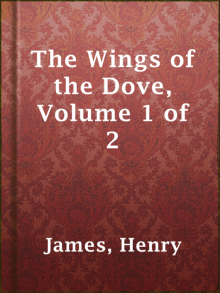 The Wings of the Dove, Volume 1 of 2
The Wings of the Dove, Volume 1 of 2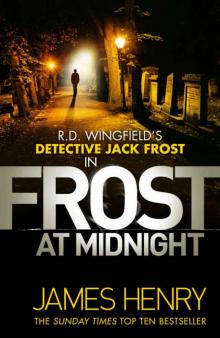 Frost at Midnight
Frost at Midnight Morning Frost
Morning Frost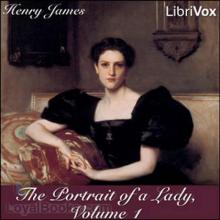 The Portrait of a Lady — Volume 1
The Portrait of a Lady — Volume 1 Fatal Frost
Fatal Frost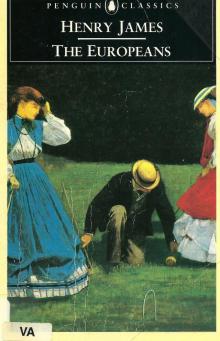 The Europeans
The Europeans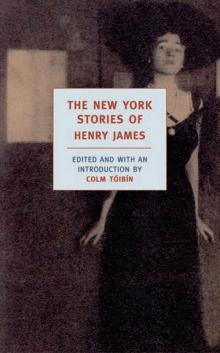 The New York Stories of Henry James
The New York Stories of Henry James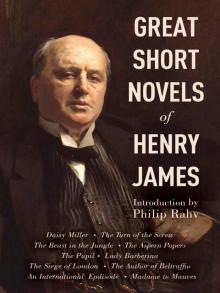 Great Short Novels of Henry James
Great Short Novels of Henry James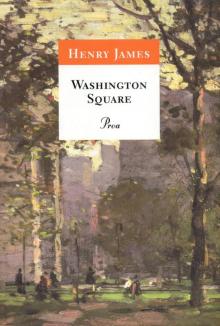 Washington Square
Washington Square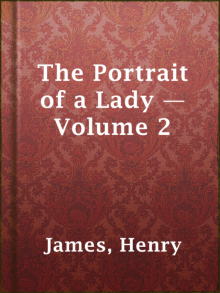 The Portrait of a Lady — Volume 2
The Portrait of a Lady — Volume 2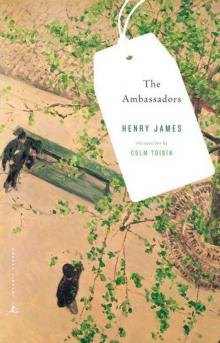 The Ambassadors
The Ambassadors The Wings of the Dove
The Wings of the Dove The Princess Casamassima (Classics)
The Princess Casamassima (Classics)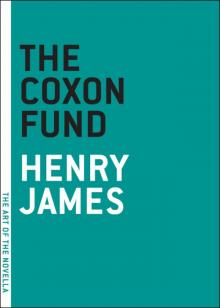 The Coxon Fund
The Coxon Fund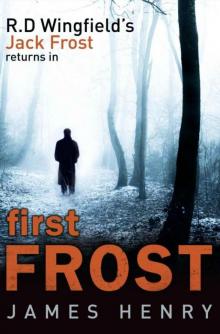 First Frost
First Frost Henry James
Henry James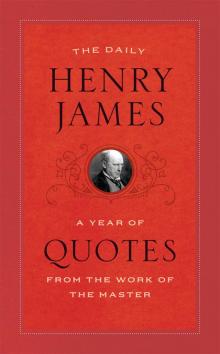 The Daily Henry James
The Daily Henry James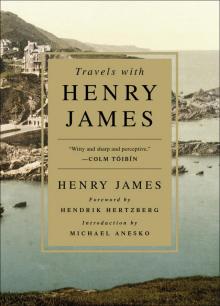 Travels With Henry James
Travels With Henry James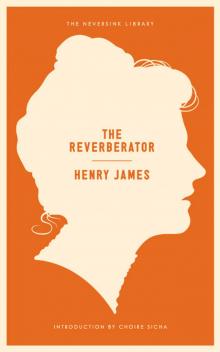 The Reverberator: A Novel
The Reverberator: A Novel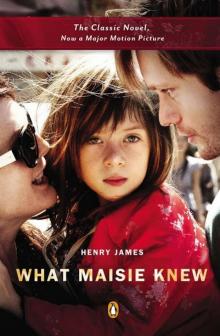 What Maisie Knew (Henry James Collection)
What Maisie Knew (Henry James Collection)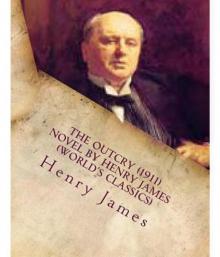 The Outcry
The Outcry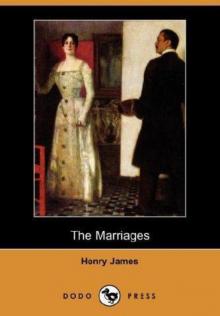 The Marriages
The Marriages The Wings of the Dove, Volume 2
The Wings of the Dove, Volume 2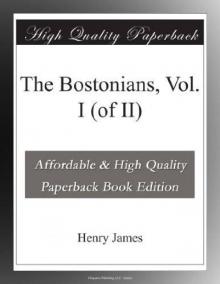 The Bostonians, Vol. I
The Bostonians, Vol. I The Outcry: -1911
The Outcry: -1911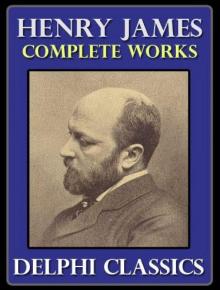 The Complete Works of Henry James
The Complete Works of Henry James Letters from the Palazzo Barbaro
Letters from the Palazzo Barbaro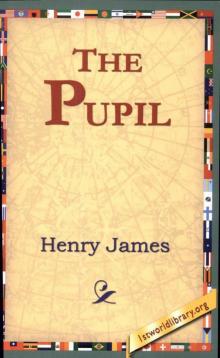 The Pupil
The Pupil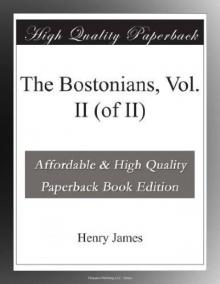 The Bostonians, Vol. II
The Bostonians, Vol. II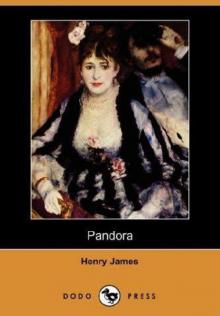 Pandora
Pandora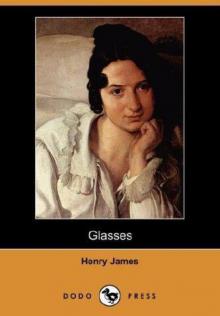 Glasses
Glasses The Princess Casamassima
The Princess Casamassima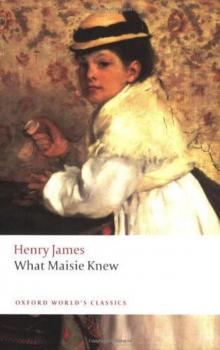 What Maisie Knew
What Maisie Knew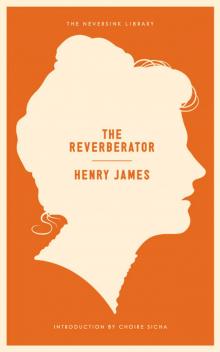 The Reverberator
The Reverberator The Golden Bowl - Complete
The Golden Bowl - Complete Confidence
Confidence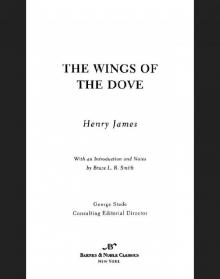 Wings of the Dove (Barnes & Noble Classics Series)
Wings of the Dove (Barnes & Noble Classics Series)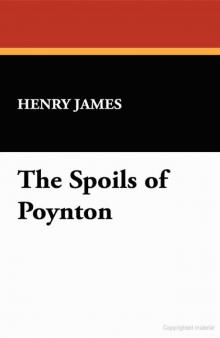 The Spoils of Poynton
The Spoils of Poynton